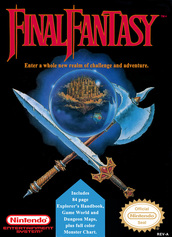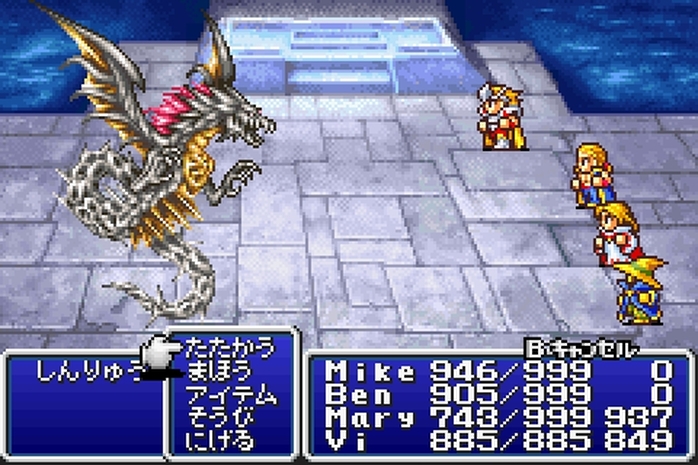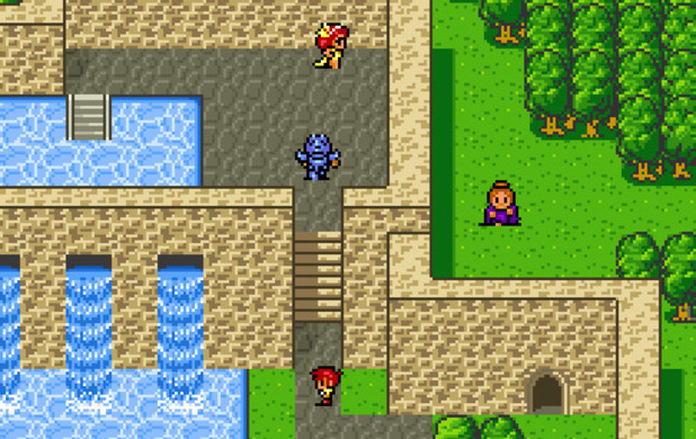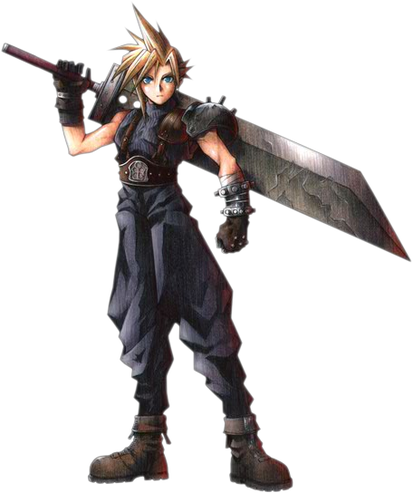
In the beginning, there was Hironobu Sakaguchi. And he said, ‘Let there be Light Warriors!’ And thus began one of the most critically acclaimed, influential, and best-selling video game franchises of all time.
The beginning in this case was 1987, the year that the very first Final Fantasy game was released for the Nintendo Entertainment System. It is no exaggeration to say that gaming would never be the same again. Spanning generations, consoles, and a host of fantastical worlds, the story of Final Fantasy and its remarkable evolution is a story well worth recounting.
 A screenshot from the very first Final Fantasy
A screenshot from the very first Final Fantasy With sixteen sequels and countless spin-offs, the Final Fantasy series may seem rather ironically and oxymoronically titled, but it is perhaps interesting to note that the game was originally conceived as Sakaguchi’s last-ditch effort to make it in the gaming industry. This was it. Do or die. His last chance. His Final Fantasy.
The story of the first Final Fantasy, while incorporating many standard tropes of the fantasy genre, is anything but your prototypical fantasy quest. It does more than hint at what was to come and is in many ways just as epic as later installments in the series. It follows four young heroes known as the Light Warriors and their quest to restore light to the four elemental orbs (Earth, Wind, Fire and Water), which have long since been darkened by the forces of evil. To do so, they must defeat the four Elemental Fiends and thus restore balance to the world. Throw in some pirates, vampires, a floating castle and a bit of time loop paradox fun and you’ve got yourself one hell of an adventure and a compelling start to the Final Fantasy canon.
It should come as no surprise that the game was a runaway success, both critically and commercially. Upon its release the game sold 400,000 copies and got the (blitz) ball rolling nicely.
Its follow-up, Final Fantasy II, was released a year later… Kinda… Sorta. See, here’s where things get a bit confusing because while the ‘real’ Final Fantasy II was released in Japan a year after the original Final Fantasy, it wasn’t released anywhere outside of Japan until much later. (Neither were Final Fantasy III and V). The second Final Fantasy game to be released outside of Japan alone was actually Final Fantasy IV, but it was retitled Final Fantasy II so as not to confuse players, which would almost seem logical except for all the subsequent confusion this caused when Final Fantasy II, III and V were eventually released outside of Japan. Still with me? See, at the time it seemed to the average non-Japanese gamer trying to follow the series that the games skipped from Final Fantasy III (which was actually Final Fantasy VI) straight to Final Fantasy VII, but actually it was just that Final Fantasy VII retained its original title rather than being retitled Final Fantasy IV when it was released outside of Japan. Get it? Got it? Good. Then let us embark further.
 Exploring the overworld in Final Fantasy IV
Exploring the overworld in Final Fantasy IV And go forward he did, with Final Fantasy III being released in Japan in 1990. Featuring a similar objective to that of the original Final Fantasy, the third installment combined and expanded upon elements of the first two games. For one thing, the class system was given a major overhaul with the introduction of the ‘job change system’, basically meaning that a character’s class was no longer fixed and could be changed throughout the course of the game in accordance with what abilities, special skills or other proficiencies the player wished specific characters to possess at a certain point. Later installments would go on to implement modified versions of this system. Final Fantasy IV was not one of these however, as it instead featured a pre-determined fixed character class. What it did do was introduce the innovative ‘Active Time Battle’ system to the series. This meant that a character’s (and player’s) speed came into play, something which added a sense of urgency and excitement to battles and which would remain in place until Final Fantasy X. 1992 saw the release of the fifth Final Fantasy game, for years cited as Hironobu Sakaguchi’s favourite game in the series. And indeed, Final Fantasy V received much praise for its gameplay and the greater freedom for customization of characters it allowed with its widely enhanced class system.
For many, however, it is the release of Final Fantasy VI in 1994 that stands as the true turning point in the series. Final Fantasy VI was a radical shift in tone for the series, set in a steampunk inspired world instead of the traditional medieval setting that had been the status quo for previous games. It features an ensemble of characters unmatched by any in the rest of the series, with fourteen permanent playable characters – the most in the series – all of which could be standalone protagonists in their own right. Its story is also one of the most engaging of the series, putting a fantastical twist on the tale of a rebel group trying to overthrow an evil empire, and set against a backdrop of magic and machinery. It was the first installment in the franchise to be hailed as one of the greatest video games of all time and has sold 3.48 million copies to date.

It’s the game that redefined and truly cemented the Japanese-style RPG in the mainstream, capturing the hearts and minds of a generation and propelling the Final Fantasy series to never before reached heights. Final Fantasy VII is quite simply the greatest video game ever. This is not an opinion. It is a fact.
Okay. so it’s an opinion.
But it’s an opinion shared by many. One thing that is definitely not up for debate though is Final Fantasy VII’s status as far and away the most popular installment in the canon, selling over 10 million copies and spawning a number of prequels and sequels, including a feature film continuation in the form of Final Fantasy VII: Advent Children. Set primarily in a neo-industrial dystopia, Final Fantasy VII has perhaps the most well developed ‘World’ in the series, and follows a group of eco-terrorists known as AVALANCHE in their plight to stop the damage being done to the Planet by evil power corporation, Shinra.
In terms of gameplay, Final Fantasy VII basically modified and improved upon what had come before it, with such additions as character specific ‘Limit Breaks’ – a type of special attack that could be charged during battle and then unleashed to inflict maximum damage on enemies, or otherwise help to aid your party. While in place of a standard class system, Final Fantasy VII incorporated something known as Materia – orbs of condensed life energy with varying properties - which could be equipped to characters in order for them to gain certain abilities.
With Final Fantasy VII, you had one of gaming’s greatest anti-heroes - the smart talking, oversized sword wielding, Cloud Strife - coming up against one of gaming’s most recognisable and most ruthless villains in Sephiroth. You had a perpetually pissed off Mr. T look-alike with a gatling gun in place of a hand. You had a loveable flower girl from the slums with a mysterious past to be uncovered. You had some of the most cinematic cut scenes the series had ever attempted, including one of the most genuinely shocking and upsetting death scenes in video game history.
The first Final Fantasy released for the PlayStation, Final Fantasy VII is undoubtedly the milestone of the series and still remains the benchmark by which every future installment is judged.
And next time, I’ll be looking at those future installments and exploring how the series built upon what it had achieved with the monumental success of Final Fantasy VII.

 RSS Feed
RSS Feed
